Oh the weather outside is frightful . . .
We just experienced our first major snowstorm of the season! Snow has been falling outside continuously for the past 15 hours. It’s times like these when I just want to stay indoors and enjoy a nice, warm hot pot with family and friends.
Although I've grown up eating hot pots Taiwanese-style, this past year I had the opportunity to enjoy hot pots from a variety of cultures and venues. Join me as I take you on a culinary tour throughout Asia, exploring various renditions of the hot pot.
What is a hot pot?
Well, most simply, it’s a hot communal pot in the middle of a table filled with a flavored broth. Diners cook their own food by briefly dipping raw ingredients into the hot broth. Ingredients can vary widely, but typically include thinly sliced meat, seafood, vegetables, tofu, fish cakes, and the like.
Culinary Tour Stop 1: Sichuan, China
It's hard to pinpoint exactly when the hot pot style of eating first appeared in China, although Chinese scholars have found evidence of people cooking and eating around a boiling pot of broth as far back as the fifth century B.C. However, it was not until the Ming and Qing periods (1368-1911), that the hot pot actually gain popularity. In fact, the imperial court of the Qing dynasty served hot pots both on the emperor's winter menu and also at the feast celebrating the new emperor, Jia Qing in 1796.*
What sets the Sichuan hot pot apart from typical Chinese hot pots is its classic spicy broth. This wonderfully flavorful, numbingly spicy broth gets its characteristic flavors from Sichuan chilies and Sichuan peppercorns. The chilies give the soup a fiery burn, while the peppercorns have an unusual numbing effect on the tongue. The Sichuan hot pot originated from the city of Chongqing, where street peddlers would sell "beef trip hot pot," a hot, spicy soup consisting of chopped up water buffalo innards cooked in a spicy broth filled with chilies and Sichuan peppers. In the 1930's, the hot pot became elevated to restaurant status with the opening of the first hot pot restaurant in Chongqing. It has been popular since.*
Dining Out at a Classic Chinese Hot Pot Chain
Because I can't just hop over to China for this post, I am taking you to the next best thing. Little Q is a well known hot pot chain in China and (lucky for me) migrated over to Boston a few years ago. It is the best example of Sichuan Hot Pot here in Boston. The mala (literally "numbing and spicy") broth is my favorite, and I like to order that one in conjunction with a non-spicy broth in a "ying-yang" pot (pictured above), thus allowing a balance of flavors. Little Q offers a variety of meat, vegetables, and all sorts of other hot pot sides, including exotic ones like tripe, intestines, beef tongue, and pig's blood. It's most fun to visit with a large group, as you will be able to enjoy a much larger variety of things. For more details on Little Q, please check out my previous post on this restaurant here.
Cooking@home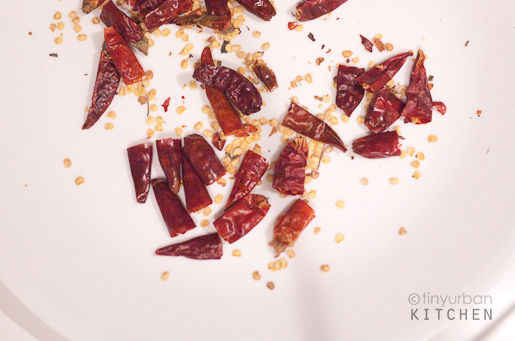
I also recently tried a home-version of the mala broth based on a recipe by Fuchsia Dunlop from her highly regarded book, Land of Plenty. Fuchsia Dunlop was the first foreigner to study Sichuanese cooking at the acclaimed Sichuan Institute of Higher Cuisine in Chengdu, China. Stay tuned this week as I share Update! Here is the recipe and a photographic tutorial on how to make your own spicy mala broth!
Culinary Tour Stop 2: Tokyo, Japan
The Japanese version of hot pot is called "shabu-shabu" and was invented after WWII in 1952 by Tadakazu Miyake, owner of a restaurant called Suehiro in Osaka, Japan. The story goes something like this. During WWII when Japan occupied Manchuria, Japanese soldiers had the opportunity to try “Syu Wan Yan Row,” a Chinese dish where lamb is eaten with sauces made from sesame seeds or soy sauce. Combining that with the traditional Chinese hot pot, Miyake perfected these ideas to open his first shabu restaurant in 1952. He named this new cuisine "shabu-shabu" because, one day, as he was watching his assistant wash towels in a large basin, he thought the swishing sound of towels in the basin sounded like the sound of raw meat being dipped and "swished" in the broth. His restaurant became so popular that he eventually trademarked the term "shabu-shabu".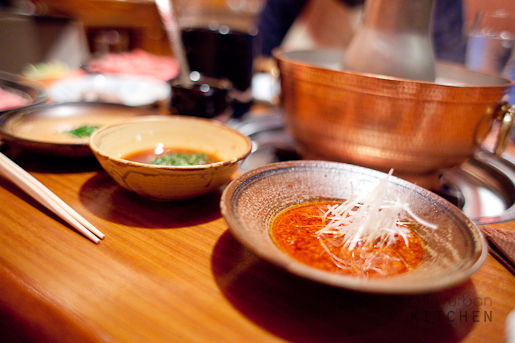
Japanese shabu differs from traditional Chinese hot pot in a lot of ways. First, the broth is simple - a light dashi based broth made from kombu (Japanese seaweed). Unlike the Sichuan Hot Pot, which arguably does not need a broth because the soup itself is so flavorful, Japanese shabu-shabu usually comes with a few dipping sauces, such as ponzu, sesame seed sauce, and spicy sauce.
When Bryan and I went to Tokyo this past spring, we decided to treat ourselves to the most decadent shabu-shabu imaginable - Kobe beef shabu-shabu, truly the pinnacle of this once humble dish made with water-buffalo innards on a riverside! After doing some research, we found out that Seryna was the best known shabu-restaurant in Japan.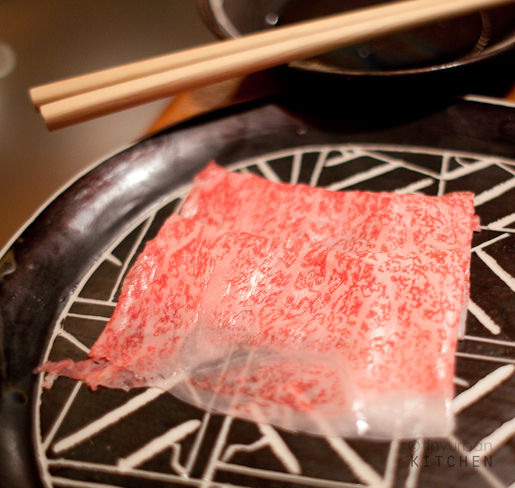
I must say, that the Kobe beef was incredibly decadent, buttery soft, and utterly delicious. Check out the fine marbling in the picture! It's insanely expensive (the meat is literally $1/gram) but totally worth it - at least once! An interesting difference we found between traditional Chinese hot pot and Japanese hot pot is that the Japanese are pretty meticulous about keeping the broth clear. A waiter would come by periodically and scoop out any stray bits that were floating in our soup. I find this greatly amusing because Chinese people couldn't care less about that. We think that the more stuff that's in there, the better tasting the rich broth!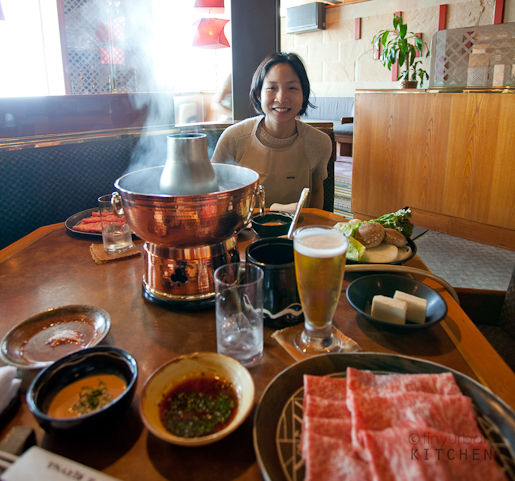
Later on this week I will post a Update! Here is the detailed description of our meal at this most fabulous and decadent shabu-shabu restuarant.
Culinary Tour Stop 3: Taiwan
I have enjoyed hot pots at home for as long as I can remember. In lieu of the traditional turkey dinner during Thanksgiving or the goose served during Christmas, my family has always enjoyed a hot pot. Here I will share with you how my Taiwanese family typically enjoys the hot pot. This past Saturday, as part of Foodbuzz's 24, 24, 24 event, I enjoyed a Taiwanese-style hot pot at my home with 9 other guests.
The Taiwanese version of hot pot involves various forms of thinly sliced meat, fresh seafood, and fresh vegetables. 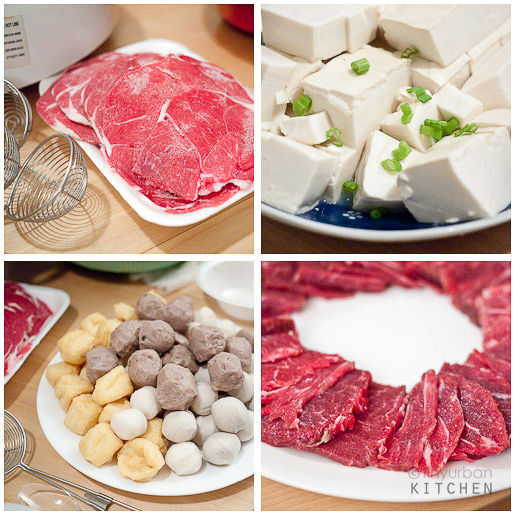
You can typically buy thinly sliced beef, lamb, and pork at Asian grocery stores. These are perfect for hot pot because they cook quickly. Plus, it's hard to slice meat so thinly at home. Various forms of tofu are also very popular. The deep-fried tofu square are especially popular because they absorb the flavors of the soup very well. Various types of fish-cake type balls (fish balls, beef balls, shrimp balls) are also popular. Chinese fish balls are similar to imitation crab meat, which is also made from a similar type of fish product.
I recently discovered, thanks to my brother-in-law, that sliced filet mignon tastes absolutely fantastic in hot pot! You can pick up filet mignon for about $11/lb at Costco. This was definitely the hit of the night, and my guests could not stop eating it! Later on this week, I will post a Here is the tutorial on how to prepare filet mignon for hot pot!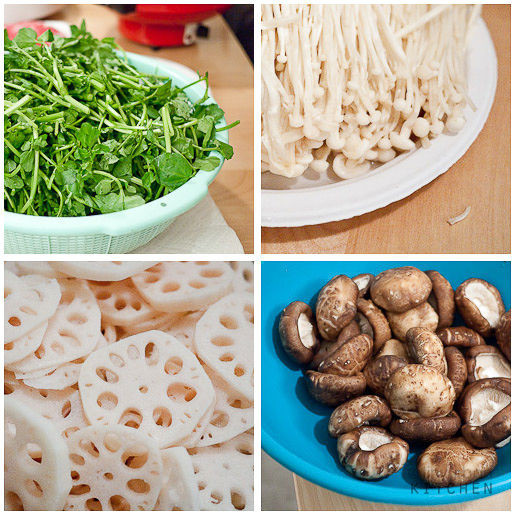
Hot pot is typically pretty healthy because of the vegetables that you eat. You can use whatever you like. The most classic vegetable used in a hot pot is called "Tong Hao" (a green leafy vegetable, also known as edible chrysanthemum). Other common vegetables include watercress (upper left), enoki mushrooms (upper right), sliced lotus room (lower left - my favorite!), and shitake mushrooms (lower right). Napa cabbage (already in the broth) is also a classic - the sweetness of this vegetable flavors the broth really nicely.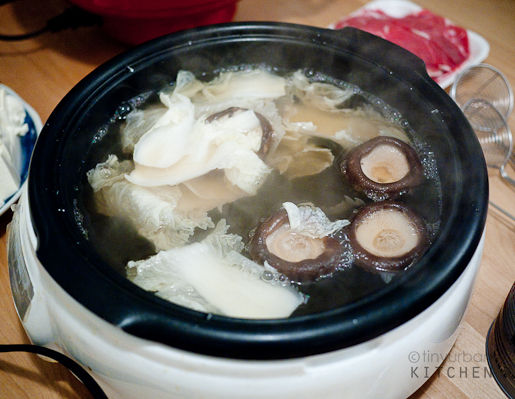
The broth is typically made of a light stock, such as seafood stock or chicken stock. You can heat up chicken stock and just add some aromatic vegetables, like some Shitake mushrooms and napa cabbage, like I did in this case. For a Taiwanese hot pot, the broth flavor does not matter as much because the meat and vegetables added later will continue to flavor the broth.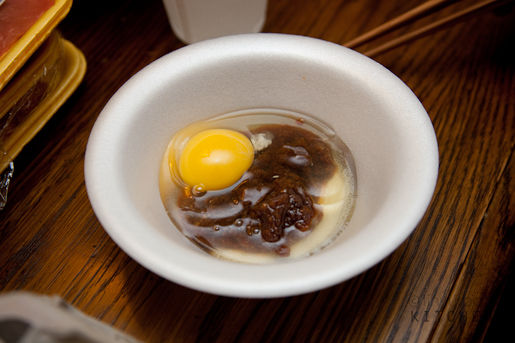
Also, similar to the Japanese, the Taiwanese use a dipping sauce. The most popular dipping sauce contains a mixture of Satsa (Chinese BBQ Sauce), a raw egg, and soy sauce. The theory is that the boiling hot food from the hot pot will "cook" the egg briefly as you dip it into the sauce, thus preventing any risk of diseases from eating the raw egg. At our dinner party, almost everyone used the raw egg, although typically there are some that are squeamish (like me!) who choose to forgo the egg and cook it separately in the hot pot instead!
Interestingly, one of our guests' family was from Southern Taiwan. He mentioned that his family typically adds peanut butter to this mixture of Satsa, raw egg, and soy sauce. Several of our guests tried this concoction and reported that they liked it very much.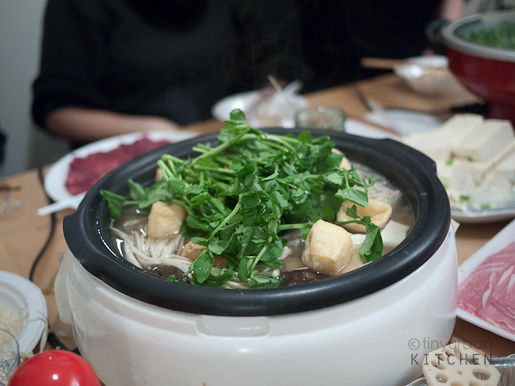
When it's time to eat, everyone can just starting throwing whatever they want into the pot! The hardest part is being famished and waiting for the water to boil again so you can eat!!
At the end of the meal, we add rice vermicelli noodles to the pot and end the evening with a nice bowl of noodle soup. At this point, people are typically stuffed, although it's hard to avoid hunting the pot to see if there are any treasures that were left unearthed!
Trying Your own Hot Pot
If you ever want to try your own hot pot, it's pretty easy. I usually use an electric skillet which I just plug into the wall. It keeps the broth boiling, and is wide and flat enough so that everyone can access the food relatively easily. Furthermore, they are inexpensive and work quite well.
There are also dedicated hot pots that are sold in Asian grocery stores. These are more convenient because the inner part of the pot can be removed for washing. With an electric skillet, you have to make sure that you don't get water on the electric outlet part!
Closing words . .
So our tour has finally come to an end. From a classic Chinese Hot Pot chain in Boston, to a high-end shabu restaurant in Tokyo, and then finally to a Taiwanese hot pot party in my humble home in Cambridge. I hope you enjoyed the tour!
Bon appetit!
*Land of Plenty by Fuschia Dunlop, pages 344-347
All Rights Reserved


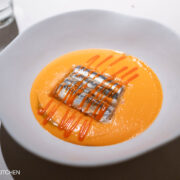
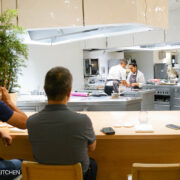

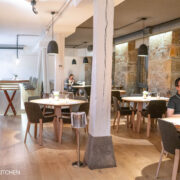




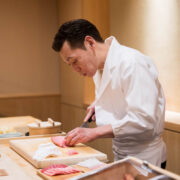
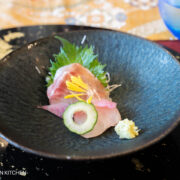
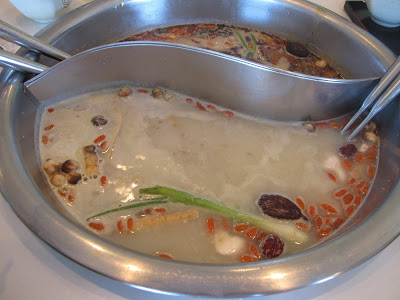
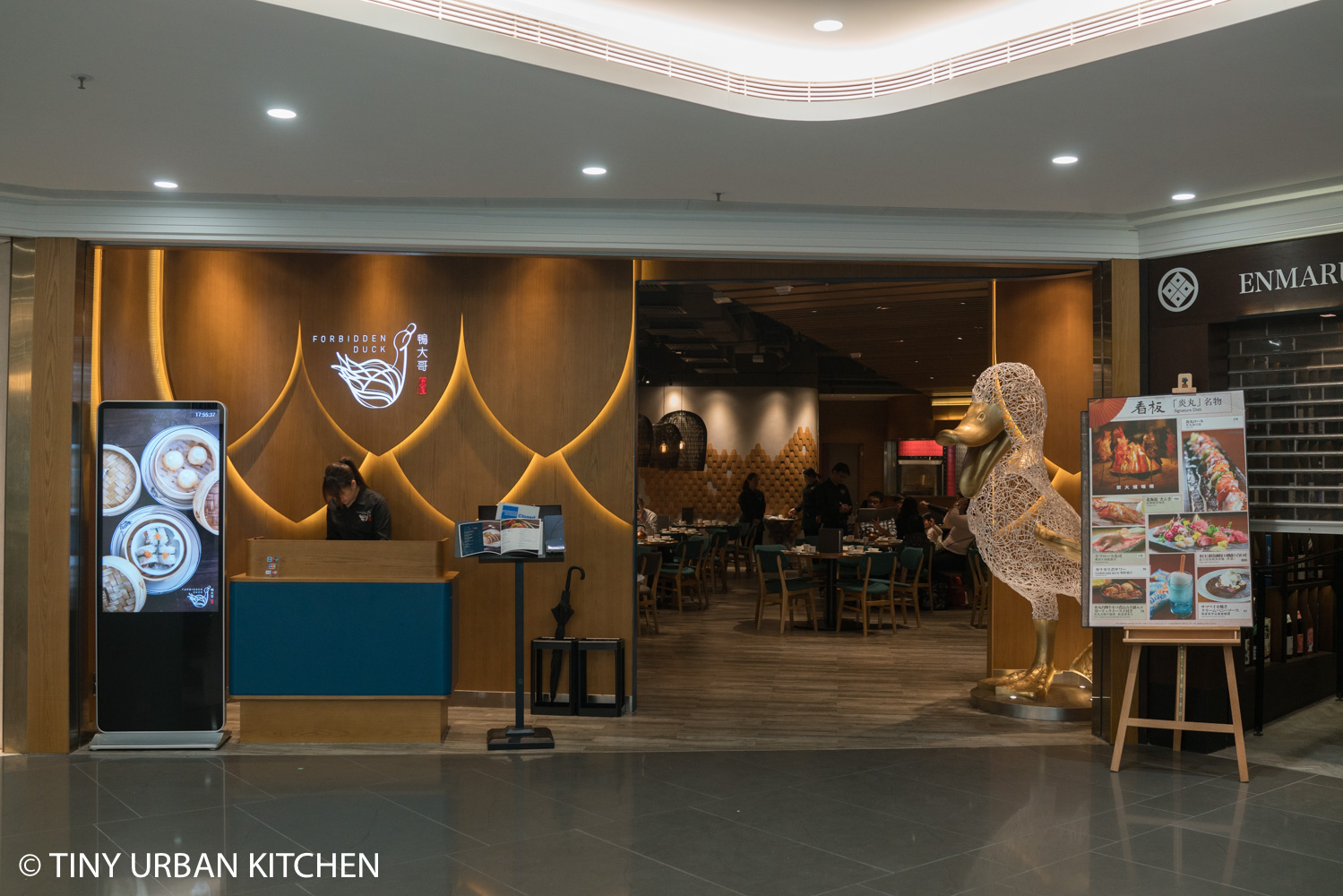
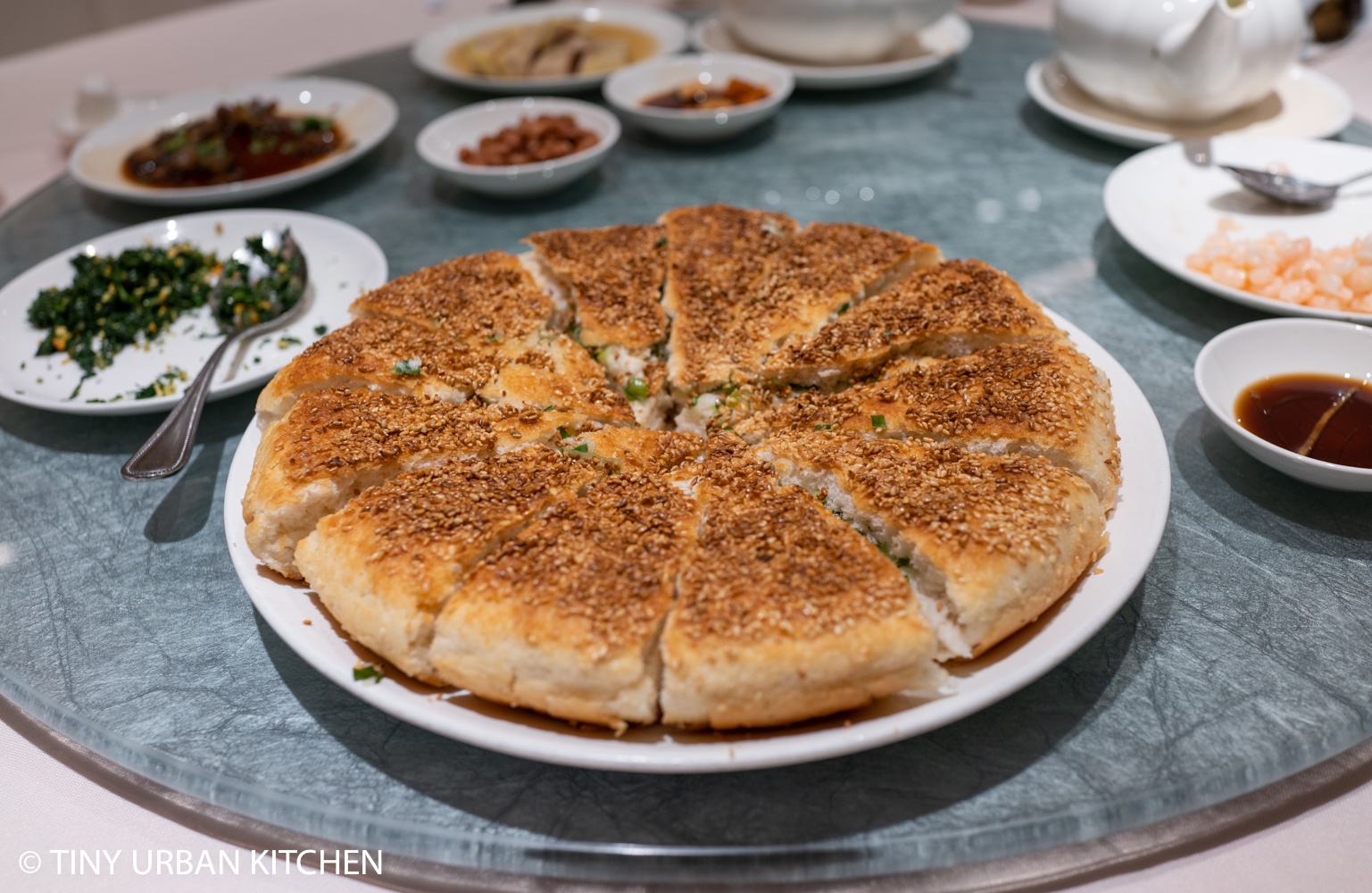
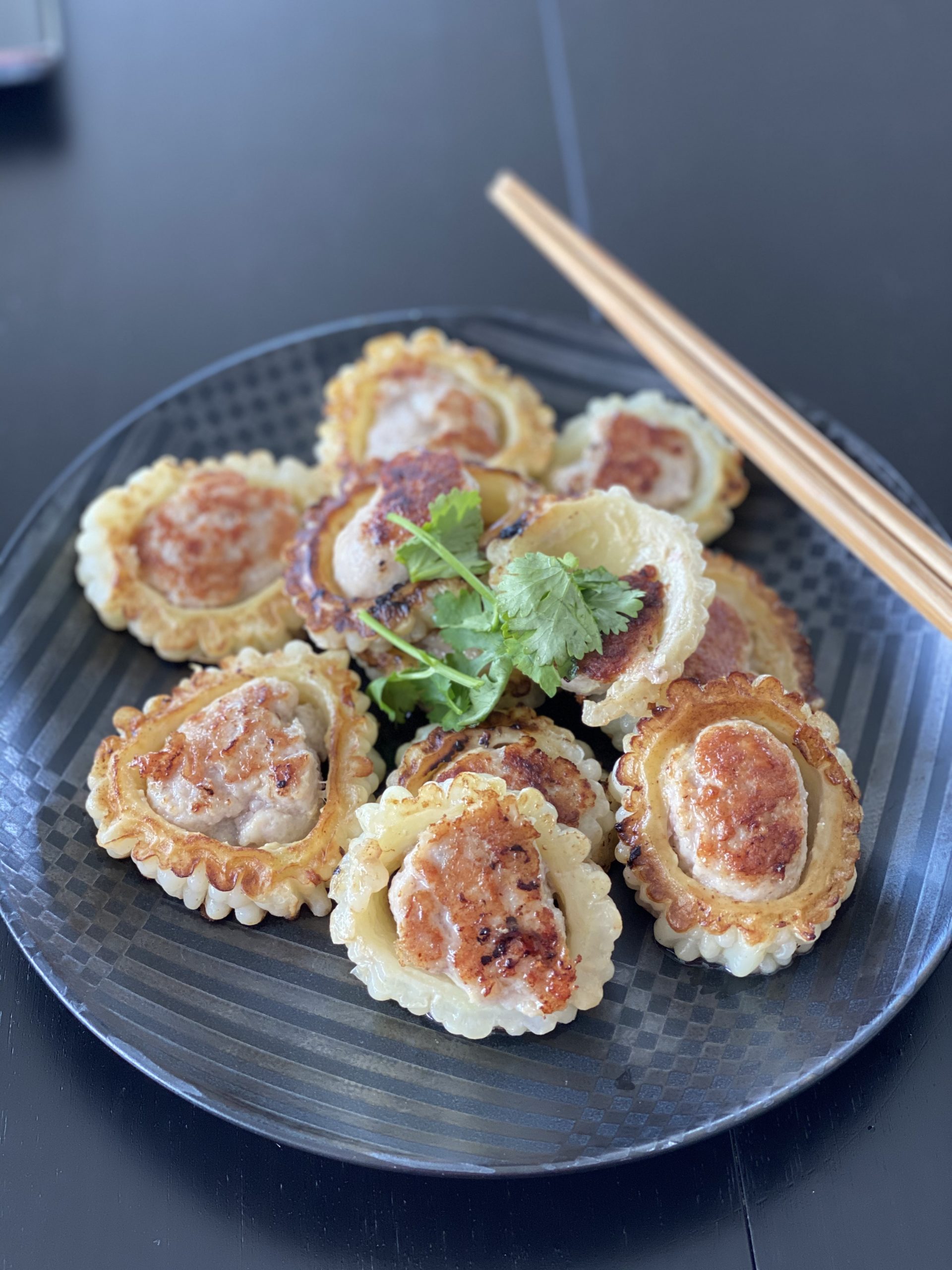
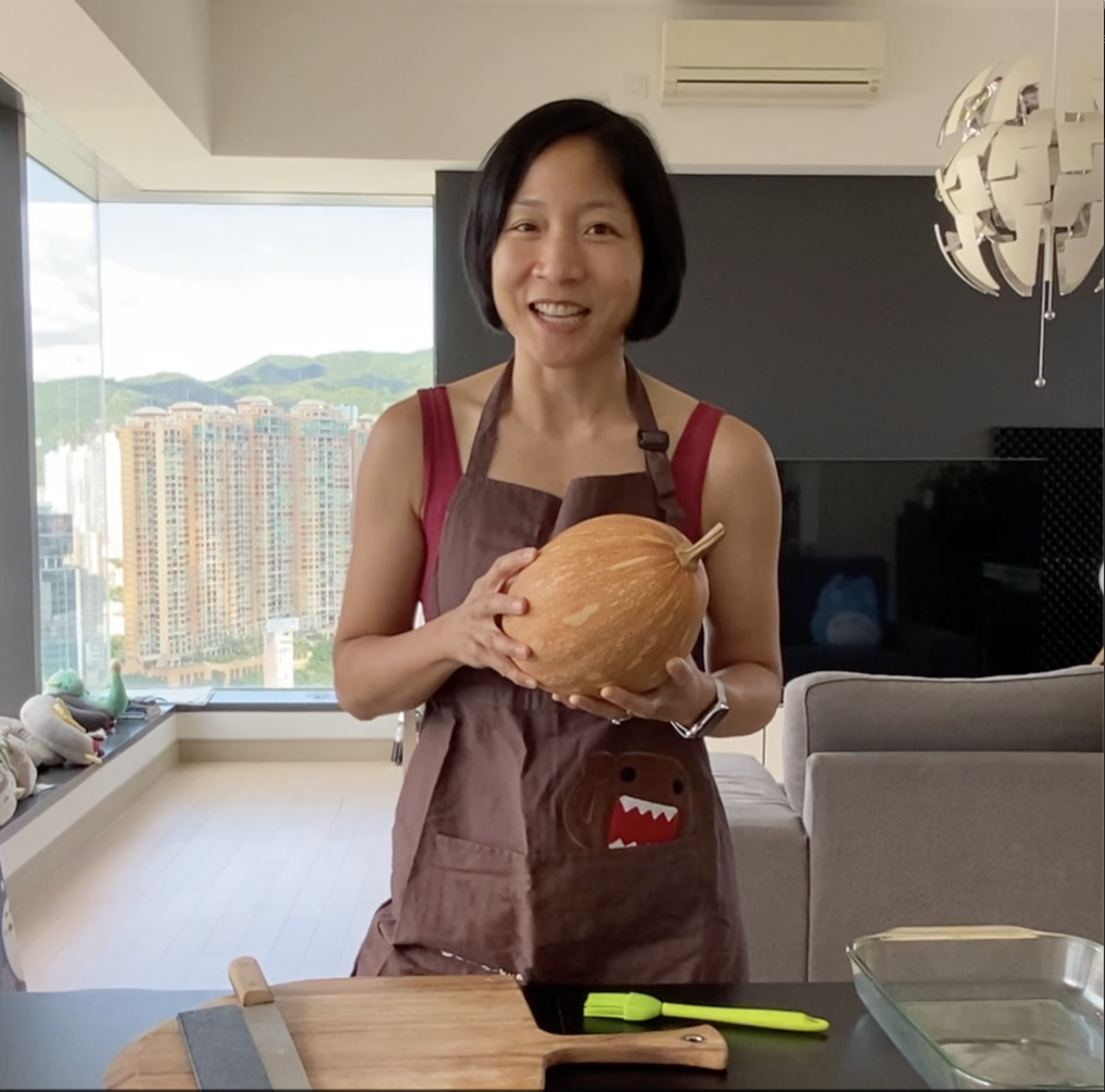
[…] meal, and it’s been an eye-opening cultural experience for me to be able to enjoy it. I had Chinese hot pot every year, plus my mom never liked turkey (or most poultry, for that matter), so we seldom ate it […]